How To Get Better At Fighting In Fortnite: Best Combat Tips

In the electrifying world of Fortnite, where every match is a high-octane blend of strategy and reflexes, the difference between victory and defeat often hinges on the mastery of combat. It’s not just about shooting straight or building fast; it’s about the nuanced dance of the seven fighting subcategories that separate the weekend warriors from the legends.
This article delves into the heart of battle, dissecting the critical importance of mastering each of these subcategories to transform you into an unstoppable force on the island.
However, the path to glory is fraught with pitfalls. Many combatants find themselves plateauing, their progress stunted not by a lack of effort, but by a foundation built on the wrong fundamentals. The consequences of such oversight are dire: strategies unravel, opportunities slip by, and the battlefield becomes less a domain to conquer and more a reminder of what could have been.
As we explore the essential tactics that define the art of Fortnite combat, remember that each one is a thread in the tapestry of triumph. Ignore one, and the entire fabric may unravel. Join us as we unveil the secrets to becoming the ultimate fighter, where every build, every shot, and every move is a step towards your next Victory Royale.
Aggression: The First Fundamental
Aggression in Fortnite is not just about the ferocity of your attack, but the precision and strategy behind it. It’s the art of dictating the pace of the engagement, of being the puppeteer rather than the puppet. When you’re the one applying pressure, your opponent is forced into a reactive state, often leading to mistakes and missed shots.
This fundamental is crucial because it can drastically reduce the duration of a fight, conserving your resources and health for future battles. Mastering aggression means you control the fight, you set the rules, and you decide when and how the fight ends.
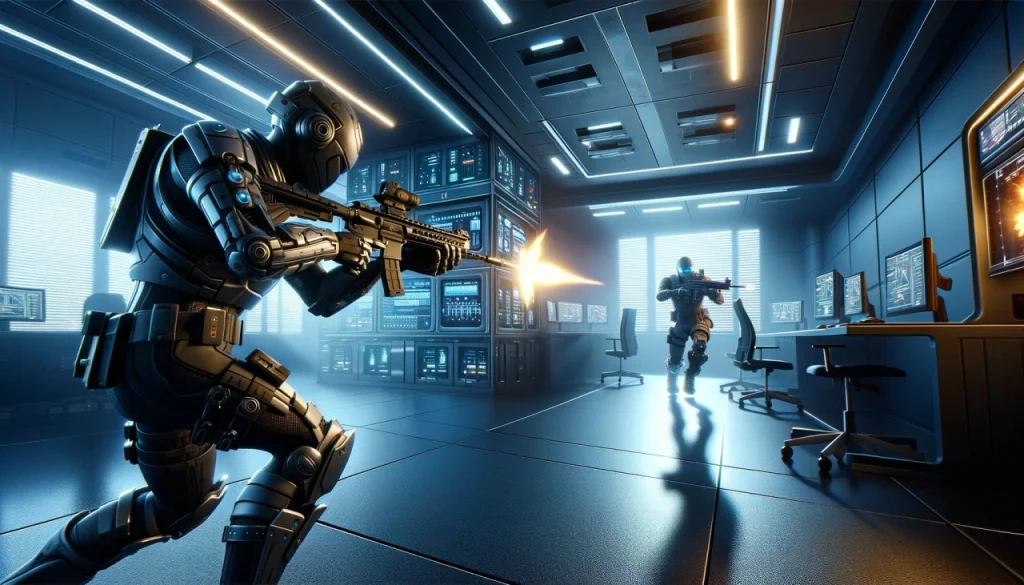
Common mistakes players make with entry tags
However, aggression is a double-edged sword, and many players fall victim to its common pitfalls. One such mistake is the misuse of entry tags — the initial damage dealt to an opponent. Players often opt for a flashy but ineffective peak, or they choose the wrong weapon for their opening salvo.
The shotgun might be your go-to for close-quarters combat, but if you’re initiating a fight, an assault rifle might be the better choice to chip away at your opponent from a distance. A shotgun blast that only inflicts minimal damage is a wasted opportunity, one that could have been a significant AR hit that alters the course of the fight.
The significance of choosing the right weapon for the first hit cannot be overstated. It’s about more than just the damage; it’s about sending a message.

A well-placed AR shot can shake an opponent’s confidence, forcing them into a defensive posture and allowing you to seize the initiative. Conversely, a weak shotgun blast might embolden them, leading to a counterattack that could put you on the back foot.
Adjusting aggression based on the damage dealt
Once the first blow has been struck, your response to the damage dealt is critical. A common error among less experienced players is to maintain the same level of aggression regardless of the outcome of their entry tags.
Tagging an opponent for a small amount of damage should not elicit the same response as a critical hit. If your initial attack doesn’t break through their defenses, it might be wise to dial back the aggression, bide your time, and wait for a more opportune moment to strike.
On the flip side, a significant hit should be the signal to ramp up the pressure, to capitalize on their weakened state, and to push for a swift and decisive victory.
In essence, aggression is about control — control of the fight, control of your opponent, and control of the outcome. It’s a fundamental that requires finesse, judgment, and the ability to adapt on the fly. Master it, and you’ll find yourself not just surviving, but thriving in the ever-evolving battlegrounds of Fortnite.
Defensive Play: The Counterbalance
Defensive play is the yin to aggression’s yang in the realm of Fortnite combat. A good defensive fighter is akin to a fortress with the ability to become a launchpad for counterattacks. It’s not about mere survival or passivity; it’s about calculated patience and the strategic use of the environment to turn the tables.
The hallmark of a seasoned defender is their situational awareness — they know when to hunker down, when to build, and when to strike. They possess a keen sense of timing, using their opponent’s aggression against them, and are adept at quickly patching up any breaches in their defenses.
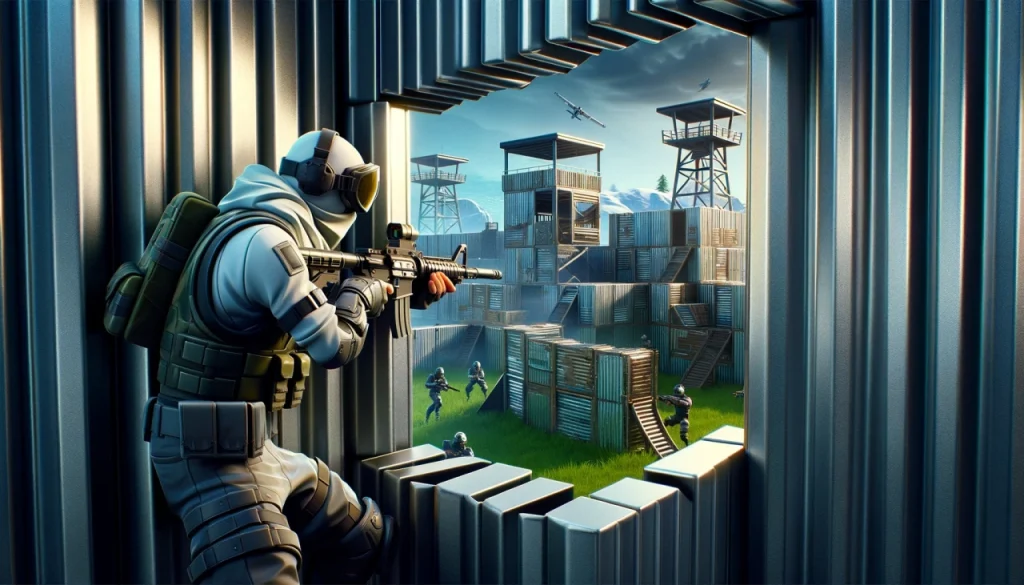
Transitioning from defense to offense effectively
The art of seizing opportunities in defense lies in the subtle cues and patterns of the aggressor. A defensive player must read the battlefield like a chess master, anticipating moves and countering them. They must recognize the split-second when an opponent overextends or when their ammo runs low. It’s in these moments that a defensive player can pivot, turning a position of defense into one of offense.
This could mean exploiting a poorly timed reload, a misstep in an opponent’s build, or a moment of overconfidence. A good defensive player knows that every aggressive move by an opponent is an opening — a chance to strike back, to reset the fight on their terms.
Transitioning from defense to offense is where the true skill of a Fortnite combatant shines. It’s a fluid motion, a dance where the lines between defender and attacker blur.
The best players use their defensive structures not just as shields, but as springboards. They create openings with clever edits, use the brief moments of enemy confusion to regain control, and turn the predator into prey. This transition is not just about firepower; it’s about the psychological impact.
A sudden and effective counterattack can unnerve even the most aggressive opponent, causing them to hesitate in future engagements.
In conclusion, defensive play is about more than just withstanding an onslaught; it’s about the strategic use of force, the conservation of resources, and the ability to flip the script at a moment’s notice. When paired with a mastery of aggression, it forms the bedrock of a combat style that is as dynamic as it is deadly.
In the high-stakes world of Fortnite, where every second counts, understanding the delicate balance between defense and offense is not just a skill — it’s a necessity.
Advanced Aggressive Techniques
Diagonal pressuring and its benefits
As we delve deeper into the intricacies of combat in Fortnite, we encounter advanced aggressive techniques that can elevate a player’s offensive capabilities to new heights. One such technique is diagonal pressuring.
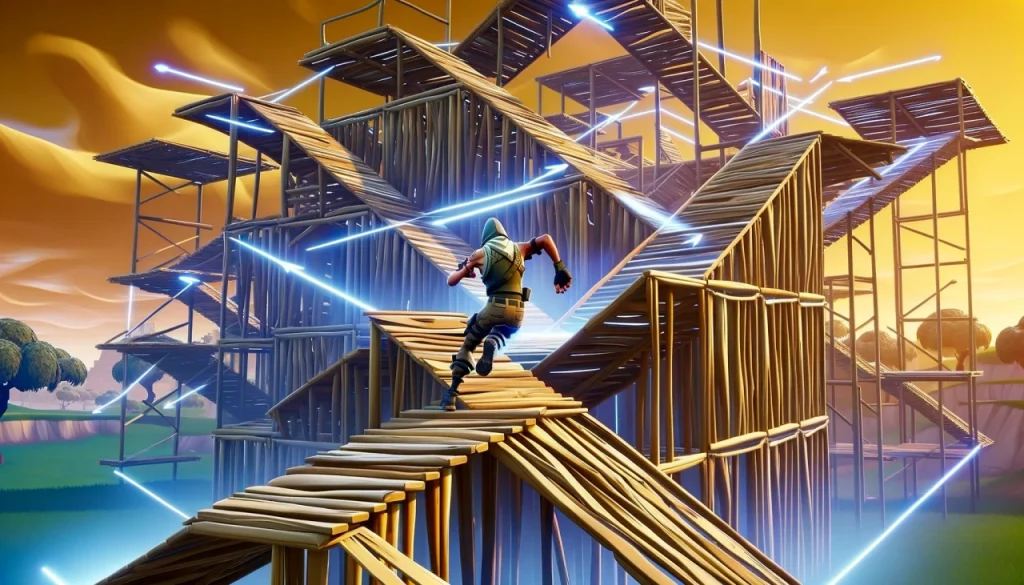
This method involves attacking an opponent’s structure from an angle, which can disorient and divide their attention. By pressuring diagonally, you exploit the natural difficulty opponents have in defending multiple angles simultaneously.
This tactic often forces errors, as the enemy scrambles to reinforce their build or counterattack, usually leading to poor decision-making that a skilled player can capitalize on for a decisive advantage.
High ground advantage and awareness
The high ground has always been a coveted position in warfare, and Fortnite is no exception. Holding the high ground offers a twofold benefit: superior vantage points and psychological pressure.

From above, a player has a clear line of sight over the battlefield, allowing for precise shots and informed decisions. It also puts the opponent on the defensive, as they must worry about upward attacks and maintaining cover.
High ground advantage becomes even more potent with heightened awareness. By keeping track of the opponent’s movements and predicting their actions, a player can control the engagement, making it difficult for the opponent to find respite or retaliate effectively.
The pitfalls of premature reloading
However, with aggressive play comes the risk of overzealousness, exemplified by the pitfalls of premature reloading. In the heat of battle, it’s tempting to reload after a few shots to ensure a full magazine. Yet, this can be a critical error.
Reloading too early not only wastes precious time but also signals to your opponent a momentary lapse in your offensive. It can give them the breathing room to heal, reposition, or counterattack. Effective aggression requires the discipline to maximize your weapon’s capacity and to reload only when it’s safe or necessary.
Phasing builds to force opponent errors
Lastly, phasing builds is a technique that can be used to unnerve and outmaneuver opponents. By intentionally positioning oneself in a way that exploits the game’s mechanics, a player can ‘phase’ through an opponent’s structures, infiltrating their defenses and creating chaos.
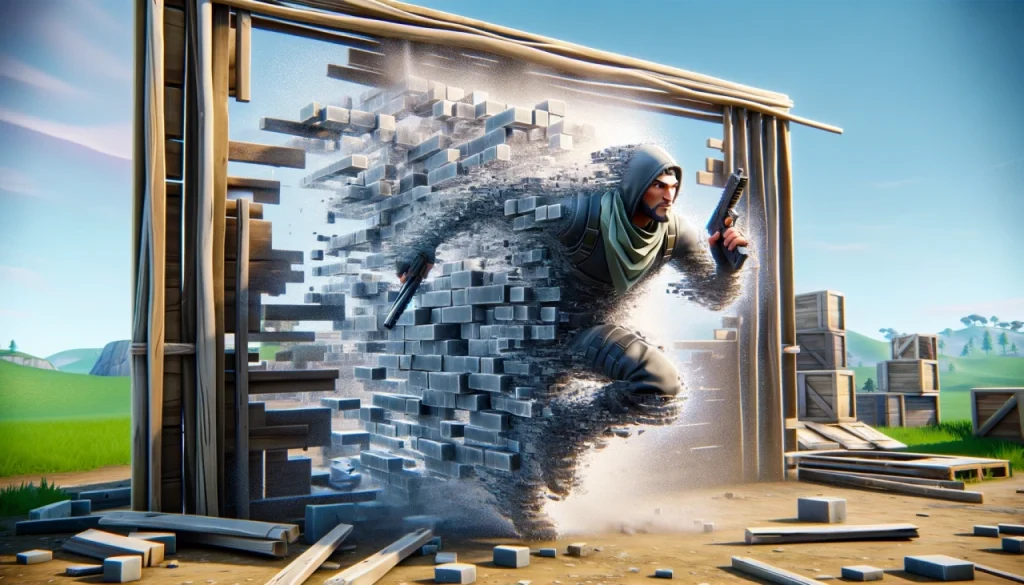
This tactic is especially useful against opponents who rely heavily on their builds for protection. When executed correctly, phasing can lead to unexpected angles of attack, forcing the opponent to make snap decisions that often result in errors.
It’s a high-risk, high-reward strategy that, when paired with precise timing and spatial awareness, can turn the tide of a fight in an instant.
Incorporating these advanced aggressive techniques requires practice and a deep understanding of Fortnite’s combat mechanics. When mastered, they can significantly enhance a player’s offensive strategy, making them a formidable force on the battlefield.
Each technique adds a layer of complexity to the fight, challenging opponents and pushing them to their limits. As players ascend through the ranks, these skills become not just advantageous, but essential to maintaining the upper hand in the relentless struggle for survival and victory.
Piece Control and Phasing
Piece control is a term that resonates with authority in Fortnite’s lexicon. It refers to the ability to manipulate and dominate the battlefield’s structures — walls, floors, ramps, and roofs — to one’s advantage. When synergized with aggressive play, piece control becomes a potent tool.
It allows a player to not only predict but dictate an opponent’s movements. By owning the structures around an enemy, you confine their options, effectively trapping them in a web of your making. This control is the linchpin of offensive strategy, enabling you to funnel opponents into unfavorable positions, block their escape routes, and set up eliminations.
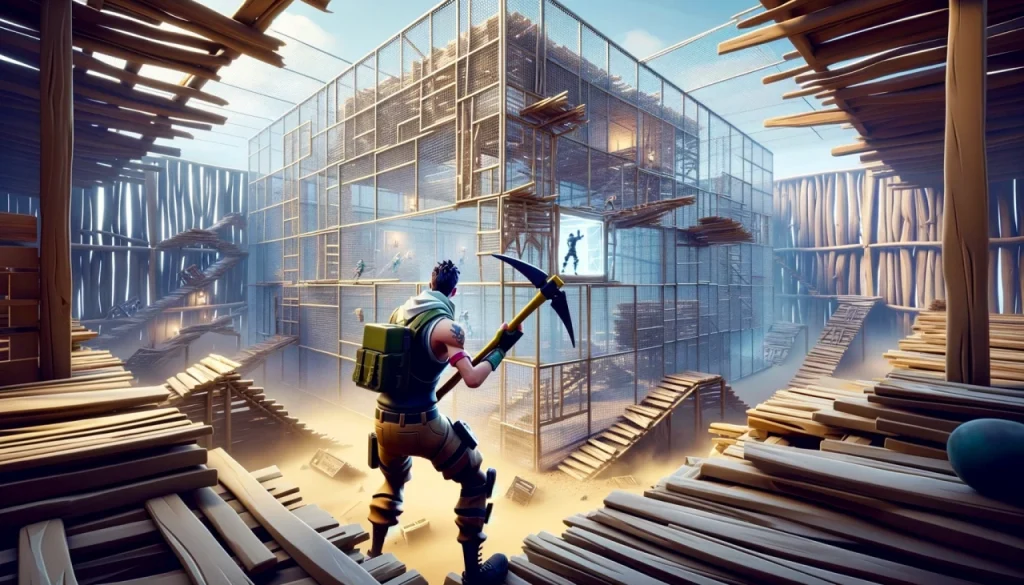
Strategies for high-ping players
For players grappling with high ping, which can impede the responsiveness of building and editing, strategies must adapt. High-ping players must often rely on anticipation rather than reaction, predicting where an opponent will be and taking control of that space preemptively.
It’s about being one step ahead, placing builds in a way that compensates for the delay. These players can also focus on strengthening their aim and exploiting the right moments to engage, rather than relying on rapid build battles.
By mastering timing and positioning, high-ping warriors can mitigate their disadvantage and still maintain a level of control over their opponents.
Utilizing phasing to maintain pressure
Phasing, as previously mentioned, is a technique that can be used to maintain pressure on an opponent. When a player phases through an opponent’s build, they can create unexpected angles and opportunities for attack.
This tactic keeps the enemy guessing and on their heels. Phasing is not just about breaching defenses; it’s about the psychological impact.
The constant threat of an opponent who can seemingly bypass walls at will can be unnerving. It forces the enemy to constantly adapt their defenses, often leading to mistakes or overcompensation in one direction, which can then be exploited.
Utilizing phasing effectively requires a deep understanding of the game’s mechanics and a keen sense of timing. It’s about knowing when to apply pressure and when to back off, allowing the opponent to think they have a moment to breathe before disrupting their rhythm again.
Phasing isn’t just a show of technical prowess; it’s a strategic choice that, when used judiciously, can keep an opponent locked in a state of defense, unable to mount a meaningful counterattack.
In conclusion, piece control and phasing are advanced techniques that, when combined with a comprehensive aggressive strategy, can elevate a player’s game immensely.
They are about more than just the physical manipulation of the game space; they are about controlling the tempo of the battle, the psychological warfare that unfolds within, and the relentless pressure that can break even the most steadfast opponents.
Mastery of these concepts doesn’t just make a player good; it makes them a maestro of the game, conducting the chaos of combat with the finesse of a virtuoso.
Wrap-up
In the crucible of Fortnite’s ever-evolving combat, we’ve traversed the landscape of the seven fundamentals that form the bedrock of fighting prowess.
From the assertive dominance of aggression to the calculated resilience of defensive play, the nuanced dance of diagonal pressuring, the strategic high ground conquest, the discipline against premature reloading, to the cunning of piece control and the disruptive art of phasing — each fundamental is a vital chapter in the playbook of a champion.
As you step back into the fray, let this knowledge be your guide. Practice with purpose, integrate these skills into the fabric of your gameplay, and watch as the battleground becomes less of a challenge and more of a canvas for your growing mastery.
Remember, in the realm of Fortnite, victory favors not just the bold, but the informed, the practiced, and the proficient. So arm yourself with these insights, and may your next Victory Royale be a testament to your dedication and skill.